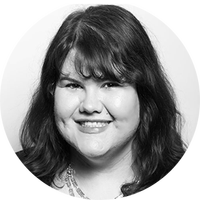2 newly-identified species of glass frogs named in Ecuador


Two newly identified species of glass frogs have been identified in Ecuador, and while they look exactly alike, scientists discovered there is much more than meets the eye.
The see-through frogs were found living 13 miles apart, just outside Quito. One of the species, named Hyalinobatrachium mashpi, lives in the Mashpi and Tayra Reserves, while the second, the Hyalinobatrachium nouns, resides in a valley in the Toisan Range. "At first, when we started to collect them, we thought they were the same species," Juan Manuel Guayasamin, evolutionary biologist at Universidad San Francisco de Quito, told National Geographic.
There are 156 known species of glass frogs in Central America, the Caribbean, and South America, and Guayasamin and other researchers have sequenced genes for most of them. After taking DNA samples of the two glass frogs found near Quito, researchers learned that they "diverge genetically by nearly 5 percent, a large gap for such otherwise similar amphibians," National Geographic writes.
The Week
Escape your echo chamber. Get the facts behind the news, plus analysis from multiple perspectives.

Sign up for The Week's Free Newsletters
From our morning news briefing to a weekly Good News Newsletter, get the best of The Week delivered directly to your inbox.
From our morning news briefing to a weekly Good News Newsletter, get the best of The Week delivered directly to your inbox.
Despite being similar sizes, having transparent bellies that reveal their internal organs, and living so close to one another, Hyalinobatrachium mashpi and Hyalinobatrachium nouns are still divided by a valley, and "when you have populations separated by a geographic barrier, you start having an accumulation of mutations in each group, and in time, they become genetically different," Guayasamin said.
Guayasamin is the lead author of a paper about the new species, published last week in the journal PeerJ. They are an example of cryptic diversity, meaning the characteristics that make them different are not apparent just by looking at the frogs. The tropical Andes is home to more than 1,000 amphibian species, and it's believed there are many more types of glass frogs just waiting to be discovered.
A free daily email with the biggest news stories of the day – and the best features from TheWeek.com
Catherine Garcia has worked as a senior writer at The Week since 2014. Her writing and reporting have appeared in Entertainment Weekly, The New York Times, Wirecutter, NBC News and "The Book of Jezebel," among others. She's a graduate of the University of Redlands and the Columbia University Graduate School of Journalism.
-
 Blue Origin launches Mars probes in NASA debut
Blue Origin launches Mars probes in NASA debutSpeed Read The New Glenn rocket is carrying small twin spacecraft toward Mars as part of NASA’s Escapade mission
-
 Dinosaurs were thriving before asteroid, study finds
Dinosaurs were thriving before asteroid, study findsSpeed Read The dinosaurs would not have gone extinct if not for the asteroid
-
 SpaceX breaks Starship losing streak in 10th test
SpaceX breaks Starship losing streak in 10th testspeed read The Starship rocket's test flight was largely successful, deploying eight dummy satellites during its hour in space
-
 Rabbits with 'horns' sighted across Colorado
Rabbits with 'horns' sighted across Coloradospeed read These creatures are infected with the 'mostly harmless' Shope papilloma virus
-
 Lithium shows promise in Alzheimer's study
Lithium shows promise in Alzheimer's studySpeed Read Potential new treatments could use small amounts of the common metal
-
 Scientists discover cause of massive sea star die-off
Scientists discover cause of massive sea star die-offSpeed Read A bacteria related to cholera has been found responsible for the deaths of more than 5 billion sea stars
-
 'Thriving' ecosystem found 30,000 feet undersea
'Thriving' ecosystem found 30,000 feet underseaSpeed Read Researchers discovered communities of creatures living in frigid, pitch-black waters under high pressure
-
 New York plans first nuclear plant in 36 years
New York plans first nuclear plant in 36 yearsSpeed Read The plant, to be constructed somewhere in upstate New York, will produce enough energy to power a million homes



